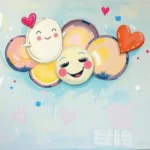
Introduction
Dreams have long fascinated humanity, acting as a window into our subconscious and often reflecting our innermost thoughts, fears, and desires. Among the myriad of dreams that people experience, those involving being tied up or restrained stand out due to their intense emotional impact and the rich symbolism they carry. The experience of feeling trapped can evoke a range of responses, from fear and anxiety to confusion and curiosity. This article delves into the symbolism associated with tied up dreams, exploring their meanings, variations, and how they relate to our waking lives. Understanding these dreams can provide invaluable insights into our emotional landscape and personal circumstances.
Symbolism and Meaning
When interpreting tied up dreams, it is crucial to recognize the symbolism inherent in the experience of being restrained. The act of being tied up often represents feelings of powerlessness and loss of control. This can stem from various sources in our waking lives, such as stress at work, difficult relationships, or internal conflicts. In these dreams, the binding can symbolize external pressures that confine us or internal struggles that inhibit our freedom.
Another layer of interpretation suggests that being tied up may indicate a desire for protection or security. For some, the bindings may represent a comforting embrace, a desire to be held back from the chaos of the outside world. In this context, the dream could reflect a longing for stability during times of uncertainty.
Additionally, the context of the dream plays a significant role in determining its meaning. For instance, if someone dreams of being tied up but feels calm and at ease, it might suggest a willingness to surrender control in a situation that feels overwhelming. Conversely, a dream filled with anxiety and fear while being tied up could indicate deep-seated issues that require attention and resolution.
Moreover, cultural perspectives can alter the interpretation of tied-up dreams. In some cultures, being tied or bound can symbolize a connection to spiritual forces, suggesting that the dreamer is undergoing a transformative experience. In others, it might be seen as a warning of betrayal or deception, urging the dreamer to be vigilant about their surroundings.
Key Scenarios and Variations
Tied up dreams can manifest in numerous scenarios, each offering unique insights into the dreamer’s psyche. One common variation involves being tied up by a known person, such as a friend or family member. In this case, the dream may reflect feelings of betrayal or a lack of trust in that relationship. It could signify unresolved conflicts or emotions that need to be addressed, prompting the dreamer to examine their interactions with that individual.
On the other hand, if the dreamer finds themselves tied up by an unknown figure, this could evoke feelings of fear and vulnerability. This scenario might symbolize external threats or challenges that the dreamer feels ill-equipped to confront. The unknown figure could represent an aspect of the dreamer’s own psyche that they have yet to confront, such as repressed fears or anxieties.
Another interesting variation is the dream where the individual is tied up but manages to escape. This scenario can be quite empowering and may indicate that the dreamer is overcoming obstacles in their waking life. It symbolizes resilience and the ability to break free from constraints, whether they are self-imposed or external.
Conversely, if the dreamer is tied up and cannot escape, this may reflect feelings of entrapment in their waking life. It could indicate that the individual feels overwhelmed by circumstances, whether they be personal, professional, or emotional. This scenario often calls for introspection, encouraging the dreamer to identify areas where they feel restricted and consider steps to regain their autonomy.
Another variation involves the dreamer being tied up in a public setting. This can amplify feelings of vulnerability and exposure, suggesting that the individual may fear judgment or scrutiny from others. This scenario highlights the importance of self-acceptance and may encourage the dreamer to confront feelings of inadequacy or the fear of being vulnerable.
Real-Life Connections and Takeaways
Understanding tied up dreams can offer profound insights into our real-life experiences and emotional states. These dreams often serve as a reflection of our current circumstances, inviting us to explore our feelings of constraint or freedom. Recognizing the emotions tied to these dreams can lead to meaningful self-reflection and personal growth.
For instance, if you frequently experience dreams of being tied up, consider reflecting on the aspects of your life where you feel powerless or restricted. Are there situations or relationships that make you feel trapped? Identifying these areas can empower you to take action and seek solutions.
Moreover, it is essential to explore the underlying emotions associated with these dreams. Are you feeling anxious, scared, or perhaps relieved in the dream? Understanding your emotional response can provide clues about how to address your feelings in waking life. If the dream evokes anxiety, it may be time to confront the challenges causing this discomfort. Conversely, if the dream offers a sense of calm, consider embracing the aspects of your life where you feel secure, and seek to replicate that feeling in other areas.
Additionally, it can be beneficial to engage in practices that promote self-empowerment and self-awareness. Journaling about your dreams, for example, can provide clarity and a deeper understanding of your thoughts and feelings. Consider keeping a dream journal where you record your experiences, emotions, and any insights you gain. Over time, patterns may emerge, revealing recurring themes or symbols that can help you navigate your waking life.
Engaging in mindfulness practices such as meditation can also aid in processing the emotions tied to your dreams. By cultivating a greater awareness of your thoughts and feelings, you can become more attuned to the sources of your anxiety or fear, allowing you to confront and address them more effectively.
Finally, don’t hesitate to seek support from trusted friends, family members, or professionals if your dreams are causing significant distress. Sharing your experiences with others can provide valuable perspectives and support as you navigate the complexities of your emotions and circumstances.
Conclusion
Tied up dreams offer a profound glimpse into our subconscious, revealing the intricate interplay between our emotions, experiences, and aspirations. By exploring the symbolism and variations of these dreams, we can gain valuable insights into our waking lives and the challenges we face. Encouraging self-reflection and personal growth, these dreams invite us to confront feelings of powerlessness and embrace the journey toward empowerment and freedom.
As you reflect on your tied-up dreams, consider how they might relate to your current circumstances. What emotions do they evoke? Are there areas of your life where you feel constrained? By examining these questions, you can unlock the deeper meanings of your dreams and take meaningful steps toward understanding and transformation. Remember that your dreams are not merely fleeting images of the night; they are a rich tapestry woven from your thoughts, feelings, and experiences, waiting to be explored and understood.







